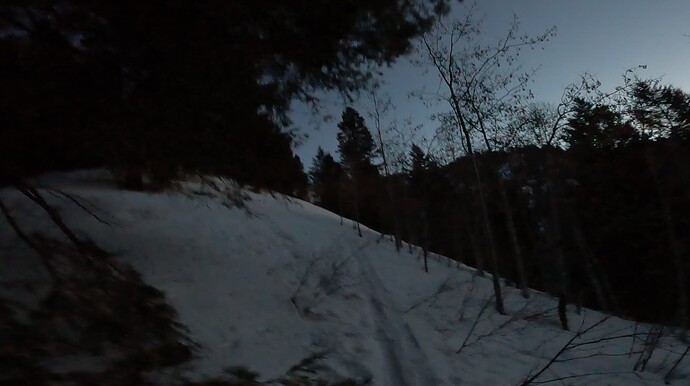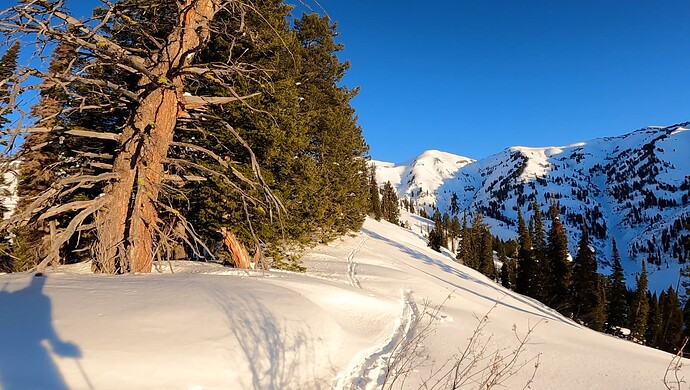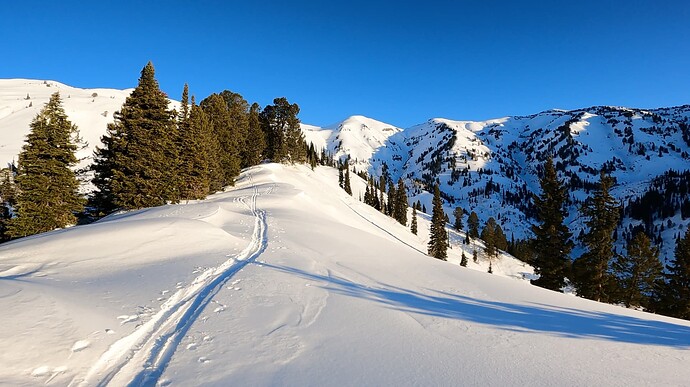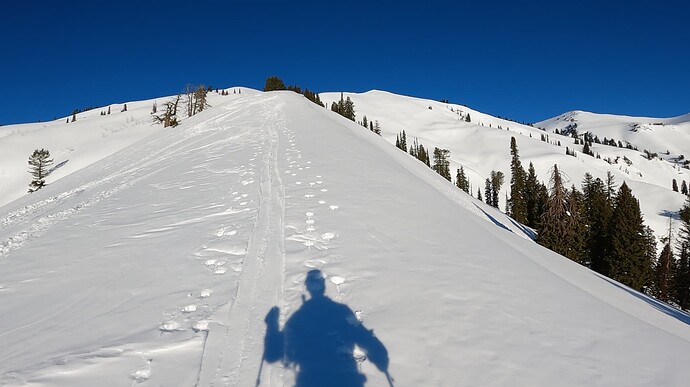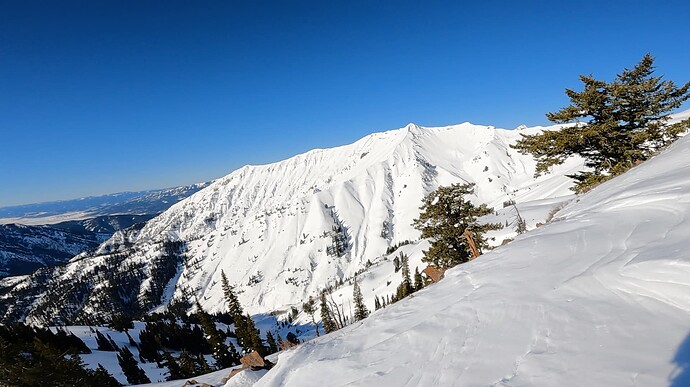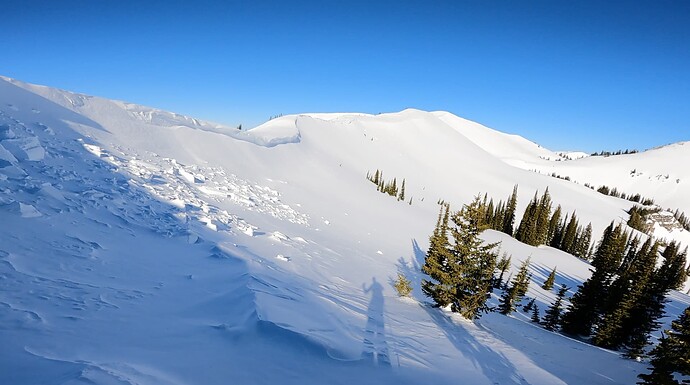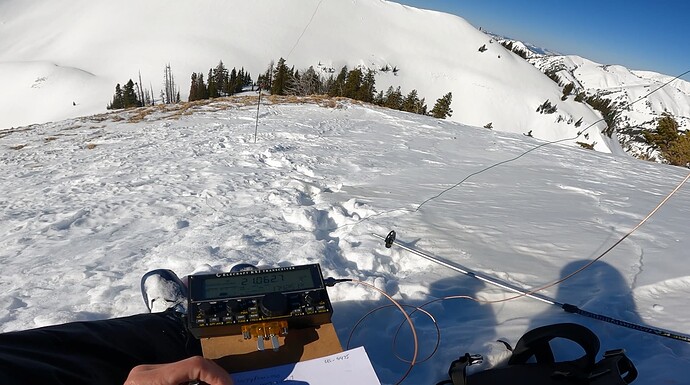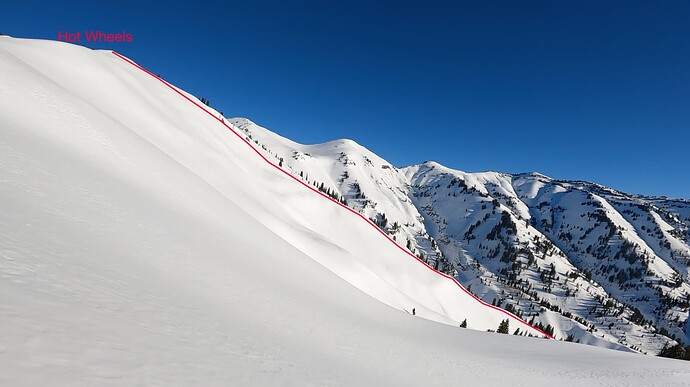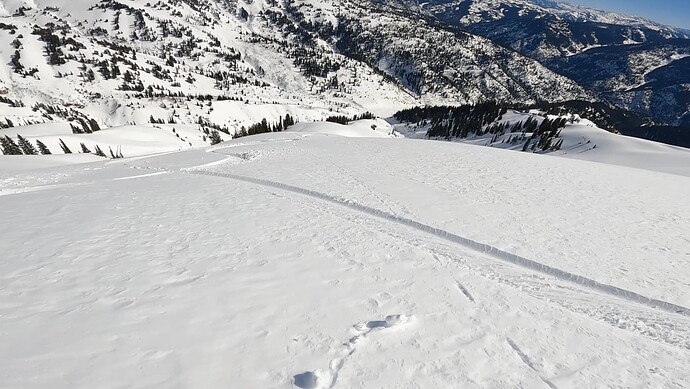Deadhorse Peak W7Y/SW-060
The great alpinist Walter Bonatti wrote a book called “On the Heights”. The book contains many of his epic mountaineering adventures. When asked if his climbs were all epics full of great difficulty and sometimes tragedy, Bonatti said he had done many climbs that went smoothly and were not epic, but that the epic climbs were more interesting to read about. I think the same is true for SOTA activations. The ones that go smoothly are lots of fun but not very interesting. On the other hand, the ones where the weather is fierce, or you forgot your mast, your coat, your hat, or got lost, or you fell down and scraped a knee, are more interesting. It’s interesting to see how the operator finds a solution to the problems he encounters.
My climb of Deadhorse Peak, while nothing close to a Bonatti epic, was one of the most difficult SOTA activations I’ve done, and it’s one I’ll never forget. The difficulty was in the ski up and down rather than the activation. On Deadhorse Peak, I got my ass handed to me on a platter.
I’ve had my eye on Deadhorse Peak, in the Snake River Range of Wyoming, for several years. It’s one of those peaks you want to do but at the same time, common sense tells you that you probably don’t. It is 4 miles and 4200’ of elevation gain. In the summer, it would probably be a horrible bushwhack; the map shows a summer trail, but it’s a very indirect route and most likely an overgrown trail or no trail at all.
I figured if I was going to do it, it would have to be in winter and on skis. I’ve skied in the Red Creek drainage before, but not as far south as Deadhorse Peak. From my experience, I knew that it is a very steep, avalanche-prone area, and Deadhorse Peak is right in the middle of the steepest terrain. So I was very nervous about doing it, but I found a reasonable route to the summit via Hot Rock Ridge, a ridge that runs all the way from the road to the saddle between Deadhorse and Cascade Peaks. I knew if I found dangerous conditions, I could ski back down the ascent route and be pretty safe.
The ascent ridge is called Hot Rock Ridge because about half way up, there are some rocks that are warmed by geothermal vents that melt the snow off rocks on the ridge in the early and late season when the snowpack is thin. But I didn’t see any sign of the hot rocks; probably too much snow. Or maybe I was too exhausted to notice.
Another thing that made me nervous about this peak is that in late February and early March, you’re more likely to find terrible snow conditions. But I had this bee in my bonnet and was eager to do it as soon as possible. I think I was worried that common sense would overpower my illogical mountaineering brain if I waited too long.
I have always known, based on experience, that mountaineers have terrible memories, aka mountaineering brain. For example, there were many times in the past when I was stuck on a mountain side, somewhat terrified, in a precarious, dangerous position, and told myself that if I ever got back to flat ground, that I would stop doing scary climbs. But then I’d get back to flat ground, have a beer and some chips, and start thinking of my next route. I think that’s pretty common among mountaineers.
At the end of February, we had about 4 days of very warm, sunny weather in the mountains. I hoped that would create some nice corn snow, which is very fun to ski. But the mountain snow is still in the transition period from cold winter powder to corn snow. It can take a month of warm weather to complete the transition. During the transition, there is every kind of bad snow you can think of. Wind Crust, sun crust, breakable crust, slush, and maybe a few pockets of very dense soft snow on northerly aspects. Deadhorse Peak had it all.
On Saturday, March 1, I arrived that the trailhead at 06:00, put on pack, skis, and headlamp, and started up Hot Rock Ridge. The snow was frozen solid, and I had to use ski crampons all the way to the summit. Ski crampons keep you from slipping down or sideways while you’re climbing, but they also slow you down and wear you out. You have to lift your ski with each step so the crampon doesn’t drag in the frozen snow. Also, icy snow makes a difficult climb even more strenuous. By the time I reached the summit after 4 hours of climbing, I was exhausted.
It was a calm, warm, sunny day, however, and I could see all of this spectacular backcountry ski area. It has some of the best roadside-accessible backcountry skiing terrain in Wyoming. Also, I was able to sit on the summit without a Bothy bag and my hands were warm. I was warm! That doesn’t happen much on Idaho and Wyoming winter activations.
Once on the summit, I quickly set up my random wire antenna and sat down in the snow with my KX2 and started transmitting on CW on 15 meters.
At first it was a bit slow, with calls coming in one at a time. Then the pileup started, but still pretty reasonable. I worked 15, 20, 30, and 40 meters and made 48 contacts with several DX calls. But I didn’t want to linger. I had a long, difficult ski down.
I decided to ski down the Hot Wheels route, a very steep and narrow spur that descends from Hot Rock point at 9242’ to Red Creek at 6800’. The descent was about as bad as it can get. Very stiff, heavy snow on the top third, and then very heavy, wet, and dangerous snow to the bottom. 2400 feet of it. On a good powder day, this would be a life changing ski run. On a bad crust and slush day, it was also a life changing ski run, one that my knees will never forget.
About half way down, the ridge narrows to about 20’ wide and is about 45 degrees as it drops over a snow-covered cliff band, and it drops off very steeply on both sides. It was a very puckering position to be in. I thought to myself, “If I can just get to the valley, I’ll start doing easier routes.”
I tried to side slip down the ridge, but the snow was like wet concrete and kept grabbing my skis. And giant snow wheels would start with the slightest disturbance and quickly turn into 3 foot 100 pound wheels of snow that left 2 foot deep tracks in the snow.
Two snowboarders had gone down the same route about an hour ahead of me ( I never saw them, only their tracks). They had set off a small avalanche of concrete snow that went from the ridge to the drainage, about 300 feet down. As I started down the snow-covered cliff band, I started another small slide. It moved down the slope slowly, like lava, but if you were in it, you were going with it til it stopped. The avalanche dropped over an even steeper section and ran into the drainage in slow motion.
I finally made it down the cliff band by side stepping with my skis on. I couldn’t take my skis off: I’d have sunk to my crotch in snow.
Normally, the downhill part is fun and fast. I expected it would take about 15-20 minutes to ski down to the valley, but it took an exhausting hour and a half. And the farther I got down the route, the worse the snow got.
Meanwhile, I had very little energy left, even for good skiing, but it just kept getting worse. I thought if I could just get to Red Creek, it would be a nice cruise back to the car. But I was wrong. Because it was hot from the sun, the snow in Red Creek was a combination of slush and frozen snow. I’d be skiing along in the slush, which is a little like skiing on sand paper (it pulls at your skis), then I’d hit a shady spot with icy snow and suddenly start going way too fast through the small aspen trees. A couple of times, I fell over sideways and just lay there, panting like a lizard. It felt wonderful to be laying in the snow rather than trying to ski it.
Finally, I put my climbing skins on my skis. Climbing skins stick to your skis and allow you to climb uphill without sliding back. But you can also use them to ski down. They slow you down, but are very clumsy to ski with. Normally, you wouldn’t use them to go down; instead you’d be merrily skiing down the valley floor. But by then, I just wanted to get out without getting hurt, even if it meant taking more time.
I finally made it back the car after an 8 hour epic adventure. My hands were cramping so bad I had to stop and slowly force them back open. I immediately drove to the gas station in Alpine, WY and got a big bottle of Squirt, a Twix bar, and a bag of Cheetos, my junk food reward for surviving a self-inflicted suffer fest.
After a day of rest, I started looking at other peaks I could ski. If I time it right, I might find some great snow AND do a SOTA activation. My common sense tells me I should wait for summer.
Below is a video of the epic.

